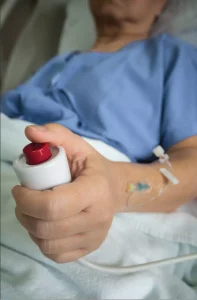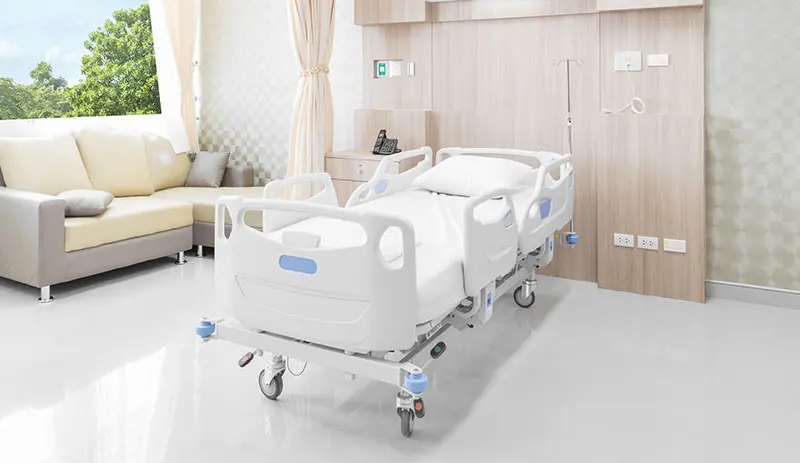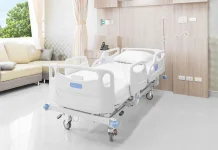IUVA Healthcare/UV Working Group

Periodically, it’s good to reassess a project’s overall status, goals and justification. Such is the case for the Healthcare/UV Initiative. Status: The working group is drafting its standard and engaging others to help. Goal: The group plans to present it at the next workshop. Justifying the standard is more complex, interweaving the latest developments in technology, infection threats, research and healthcare industry.
Technologies: UV LED nanowires
Researchers at National Institute of Standards & Technology (NIST) developed 365 nm UV nanowires producing five times more light than typical LEDs. Modifying the wavelength to 250 to 260 nm enables mind-boggling new antimicrobial applications. A standard for accurately measuring output and effectiveness would help guide UV nanowires’ future development.
Infection threat: Candida Auris (C. auris)
Identified in 2009, C. auris has spread to the US and more than 20 countries. Centers for Disease Control and Prevention (CDC) warns it usually infects hospital/nursing home patients with multiple issues. Once infected, one in three patients die within a month. Several studies affirm that UV kills C. auris, but the required UV dosage has not yet been established.
A standard defining how to establish that dosage is necessary.
Research: the patient environment
 Medical institutions are waking up to how “the environment might be an underappreciated reservoir…” of pathogens. Pathogens on hospital floors “disseminate rapidly to the hands of patients and to high-touch surfaces inside and outside the room” and can migrate into previously uninfected rooms.
Medical institutions are waking up to how “the environment might be an underappreciated reservoir…” of pathogens. Pathogens on hospital floors “disseminate rapidly to the hands of patients and to high-touch surfaces inside and outside the room” and can migrate into previously uninfected rooms.
Other contamination sources include TV remotes, patient call buttons, bed rails, phones, etc. – all UV-treatable. There are currently no Food and Drug Administration (FDA) or Environmental Protection Agency (EPA) guidelines on what to treat, how much UV is required or how often treatment is needed. An industry-accepted standard would fix that.
Industry needs: Better testing and specifications
In 2018, a healthcare newsletter published “101 Infection Control Products to Know.” This list included three UV devices with unsubstantiated claims such as “FDA-approved,” “99.9% disinfection in eight seconds” and “elimination of all HAIs in a room.” The same list included four well-known UV devices with no efficacy claims cited at all. This is a “buyer beware” market.
Current UV research hasn’t helped mitigate this atmosphere:
- A 2017 Australian study of available UV disinfection research queried six medical publication databases. Of 3,854 records reviewed, only 172 were applicable, and only nine of the 172 met the study’s acceptance criteria (<2%). All were inconclusive on UV efficacy.
- A second study in Scotland did a similar search, finding 195 articles, with only nine suitable to be “critically appraised” (<5%). After review, seven had a “low-quality” of evidence; only two had a “moderate-quality” of evidence.
So, having little factual efficacy information, healthcare consumers make do as best they can. For example, the Veterans Administration (VA) recently procured UV units costing $1.4 million using specifications like:
- 3.1: Ability to kill major classes of microorganisms, including viruses, bacteria and bacterial spores…
- 3.3: Bulbs in these devices need to put out a minimum of 200 nM to 290 nM on the electromagnetic spectrum…
While a big improvement over “brand name or equal” specifications or “sole make” justifications, they still do not delineate the medical efficacy required for success.
Conclusions
The standard(s) need to define testing and measurement protocols and establish industry minimums for pathogen treatment to promote cost-effective acquisitions and performance of UV technology in reducing and preventing HAIs that cause 75,000 deaths annually.
It’s all about saving lives.
Through the IUVA Healthcare/UV Working Group, endeavors are being made to promote the acceptance of UV disinfecting technologies as a credible, valued part of environmental management throughout the healthcare industry. In this column, the UV community will be updated on these efforts and the latest information on UV technology as it pertains to the healthcare industry.






